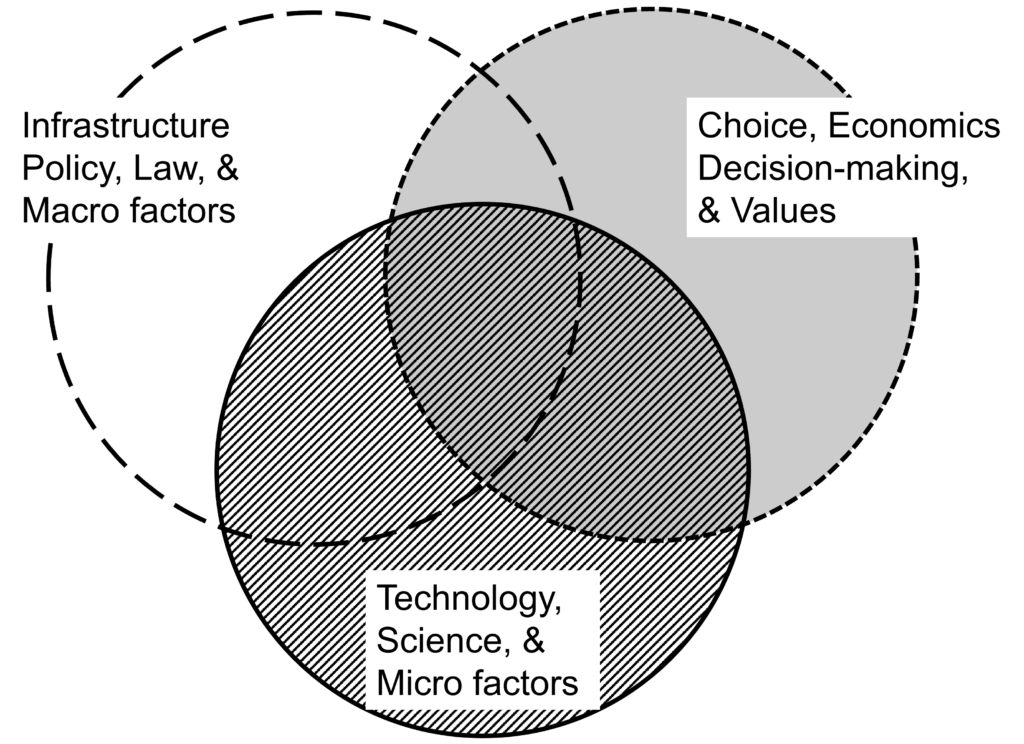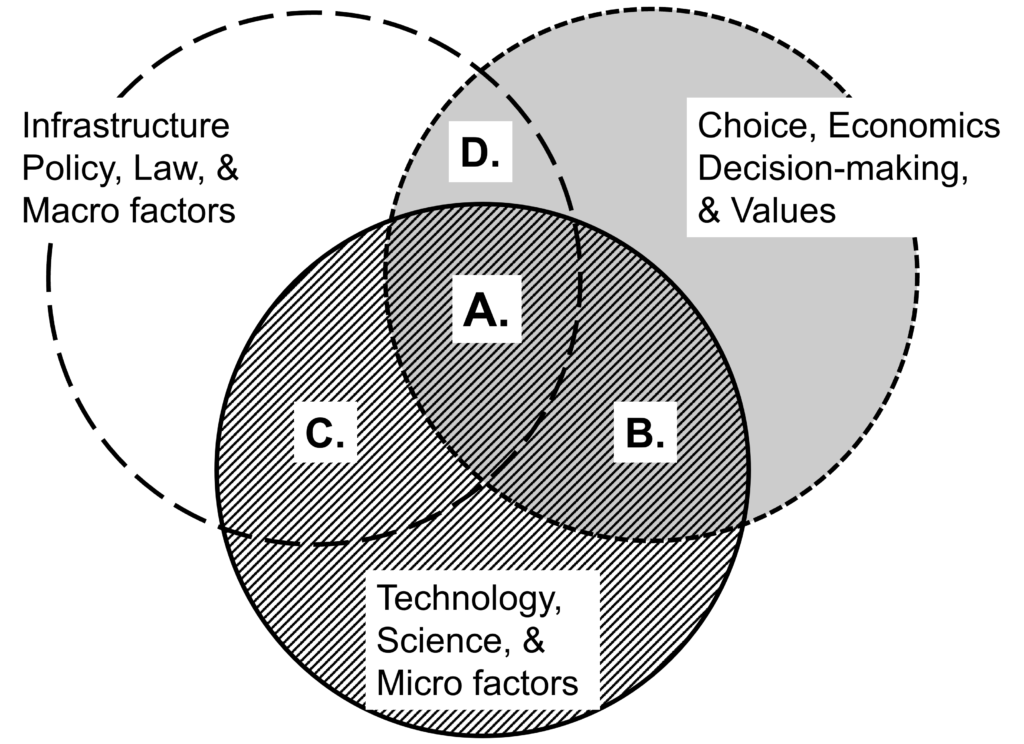Click Here for a printable (PDF) Version of this Article
Which Facts Are We Using?
Mark Jenner, PhD
May 22, 2024
Years ago, as an economist with the American Farm Bureau Federation, a colleague was explaining an ineffective regulation using the context that on a scale from 1 to 10, that rule was a minus 5. That is about as harmonious as political discussions get in an election year. Poorly written federal regulations do more harm than good. They erode the right to own and use private property and are an inefficient use of public and private resources. Economic growth is impeded if regulations add more costs than benefits. Such rules fail from lack of design.
How can that happen? The options were nearly always defined from three differing perspectives of science, policy, and culture (human choice). In different environments, situation-specific meanings are discussed. Context matters. Disagreements are based on undocumented, but legitimately different, interpretation of facts.
Which facts are the correct ones?
Science and Technology Facts. Farmers and ranchers must respect the laws of nature to be successful. They work daily with biological, chemical and physical facts such as:
- Crops and livestock cannot grow without water and nutrients.
- Wildlife carries disease and, unless separated from farm property, will infect and prey on farm crops and animals.
- People need wholesome, healthy food to live.
- These replicable facts also tend to relate to specific operations in the short-term
In a perfect world, everyone would understand these natural laws. The shaded circle on the right represents all of science (known and yet-to-be discovered).
Choices, Economic and Cultural Facts. Humans do not make choices based on perfect information. We have access to very detailed information that we may not fully understand. Other times having only a few scientific facts, and too much fear of the unknown, adds more confusion than not having any of the facts. Choices are made based on limited information.
When economics and human behavior (shaded circle on right) are added to science there is some overlap. The overlap represents the choices people make when they have solid scientific facts. Behavior without a basis in science lies outside the science circle. These are the internet experts and facts, as well as peer-groups with whom there is great trust.
Infrastructure and Policy Facts. Our laws, regulations, and policies provide the framework to avoid human choices that impinge on the property rights of others. Over the years, the regulatory framework has been expanding. The result has been the generation of many, costly, ineffective rules. The Venn diagram shows how the collection of all the possible laws, policies and programs interact with all the science facts and behaviors. It is possible to have laws based on science that have little to do with behavior. It is also possible to have laws that reflect human behavior, but not science.
This group of facts is largely dependent on long-term factors, and unlike the Science and Technology Facts, tends to influence decades, rather than a single, short-term budget cycle.
Relative Facts and Relative Truths. These three circles represent all the scientific knowledge, all human behavior (rational or not), and all the laws and regulation designed to help everyone respect private property rights. Where the distinct kinds of facts overlap, there are gray areas. In this second diagram, the overlapping areas have been labeled with four letters.
- Area ‘A’ represents the laws that provide a greater benefit relative to cost. Not all the laws and policies in Area A will be equally effective. Examples of effective policies are our national animal health programs, market regulations on fertilizers and feeds, and rules that lower the cost of doing business. These rules provide benefits that are greater than their costs.
- Area ‘B’ represents behavioral choices that respect the rights of others without the need for a law.
- Laws and policies that do not capture the desired behavior (C), or that do not originate in sound science (D), and those that miss both the behavior and scientific facts (unlabeled policy circle) are candidates for scoring a minus-five (Costs > Benefits).
- Area C is based on good science but fails to affect the desired behavior. A great example of this is the very detailed labels distributed with prescription and non-prescription medication. There is so much technical information contained on the labels that no one reads them.
- Point D represents minus five rules because they miss the best science which interferes with achieving the desired outcome.
Policy design, and the degree to which they reflect economic and scientific factors, determines whether a rule works as intended – or whether it scores a minus five. Regulations will fail from poor design when they do not reflect the best information available. Only laws and regulations that effectively integrate science and human behavior have a possibility of providing a net benefit.


